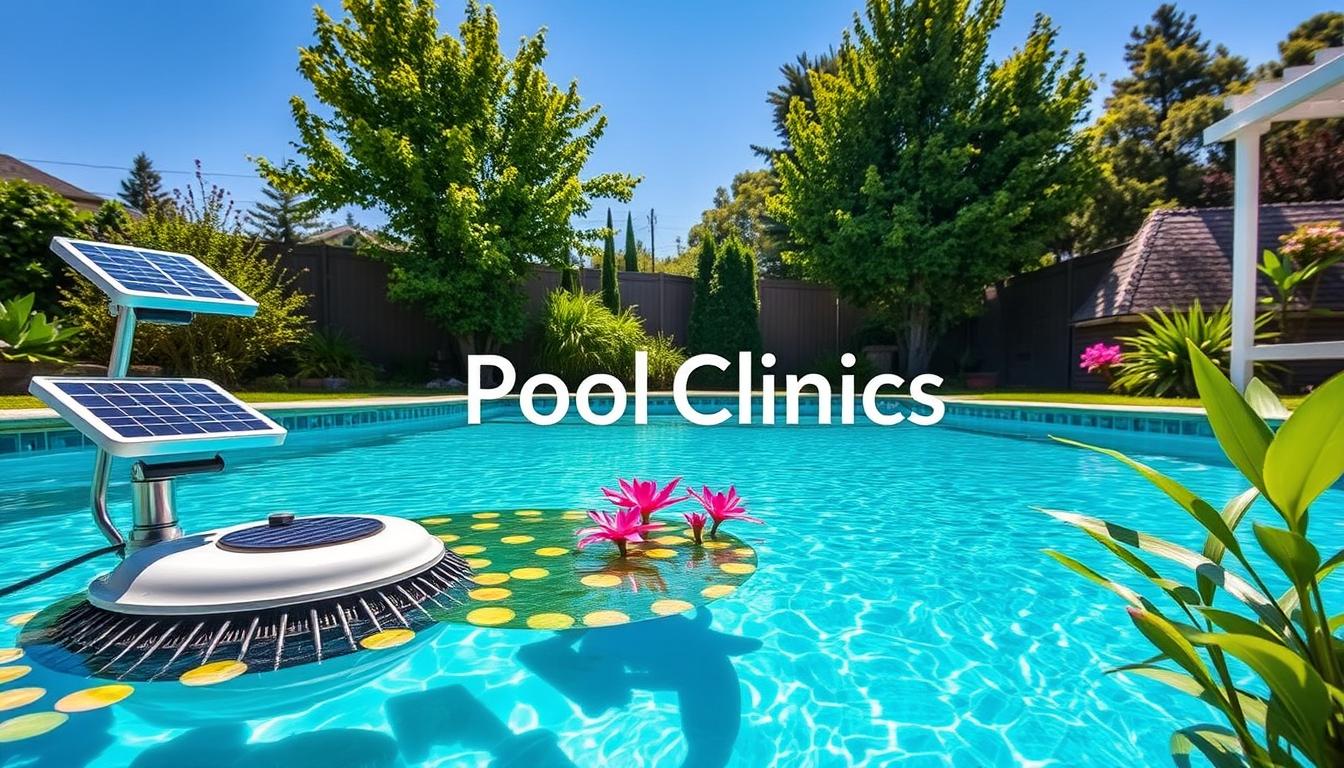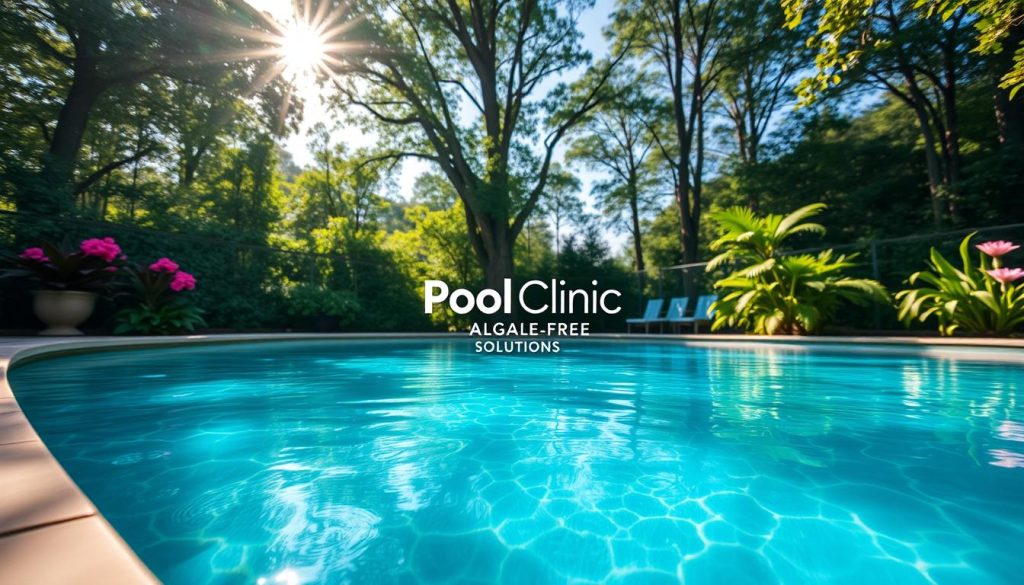
Eco-friendly pool cleaning methods are gaining popularity. Coastal Luxury Outdoors, an expert in pool services, advocates for these sustainable alternatives. Many pool owners now seek cleaner, safer options for pool care.
Chlorine, the traditional pool sanitizer, has drawbacks. It can cause skin irritation and breathing problems. The chemical smell lingers long after swimming. Constantly buying chlorine can be expensive for pool owners.
Natural alternatives to chemical-based pool cleaning exist. Solar ionizers, found on Amazon, can reduce chlorine use. Plants offer natural filtration capabilities. These methods make green pool algae removal possible without chlorine.
Eco-friendly pool cleaning creates a healthier swimming experience. It’s better for us and the environment. We can enjoy clean pools without harsh chemicals.
Key Takeaways
- Coastal Luxury Outdoors services over 1,000 clients and builds more than 100 pools annually
- Excessive chlorine can cause skin irritation, respiratory issues, and an unpleasant chemical smell
- Solar ionizers, available on Amazon, can reduce chlorine usage in pools
- Natural and effective alternatives to chemical-based pool cleaning methods exist
- Eco-friendly pool cleaning options create a healthier and more sustainable swimming experience
Understanding the Challenges of a Green Pool
Keeping a pool clean can be tough, especially in summer. Arizona’s heat and mineral-rich water create perfect conditions for algae growth. Understanding these challenges helps develop effective, eco-friendly cleaning strategies.
By identifying algae types and growth factors, we can minimize harsh chemical use. This approach ensures a crystal-clear pool while being environmentally responsible.

Identifying Algae Types in Your Pool
To fight algae effectively, you need to know what type you’re dealing with. There are three main types of algae in pools.
- Green Algae: The most common and easiest to treat, green algae float in the water, causing a cloudy, greenish appearance.
- Mustard Algae: This chlorine-resistant algae resembles dirt or sand on the pool’s bottom or sides and can be more challenging to eliminate.
- Black Algae: More common in concrete, plaster, or gunite pools due to their porous surfaces, black algae are the most difficult to eradicate and require aggressive treatment.
Factors Contributing to Algae Growth
Several factors can boost algae growth in your pool. Addressing these issues is key to organic pool cleaning strategies.
- Imbalanced Chemical Levels: Low chlorine levels and poor pH balance create an ideal environment for algae growth. Maintaining the recommended pH level between 7.4 and 7.6 and a free chlorine level of 2 ppm is crucial for preventing algae.
- Poor Circulation: Stagnant water provides a breeding ground for algae. Running your pool pump and filter for 8 to 12 hours per day helps maintain proper circulation and prevents the formation of dead spots where algae can thrive.
- Lack of Regular Maintenance: Skimming the pool surface daily, brushing the walls and floor weekly, and vacuuming regularly are essential for removing debris and preventing algae growth.
- High Temperatures and Sunlight: Arizona’s hot summers and abundant sunlight can accelerate algae growth, making it crucial to monitor and adjust chemical levels more frequently during these months.
Understanding algae types and growth factors helps develop targeted, chemical-free solutions. This knowledge is crucial for maintaining a clean pool naturally.
Next, we’ll explore natural chlorine alternatives. We’ll also provide a step-by-step guide to cleaning a green pool without chemicals.
Exploring Natural Alternatives to Chlorine
Eco-friendly pool cleaning methods offer a healthier swimming experience. Organic pool maintenance creates a cleaner, greener environment. Natural alternatives minimize environmental impact and reduce chemical use.
Ultraviolet Pool Cleaners
UV pool cleaners use light to eliminate chlorine byproducts. They neutralize contaminants, keeping water clean and clear. This method reduces the need for harsh chemicals.
Ozone Pool Systems
Ozone systems generate ozone through UV light to clean pools. They break down pollutants like body oils and sunscreen. This method significantly reduces chlorine use, creating a healthier pool experience.
Saltwater Pools
Saltwater pools offer a gentler alternative to chlorine-based pools. They use generators to create chlorine from salt water. Advanced systems can even oxidize contaminants, enhancing cleanliness.
Natural Plant Pools
Natural plant pools, or swimming ponds, are self-sustaining ecosystems. They use aquatic plants as biological filters. These pools absorb contaminants, requiring minimal maintenance.
Natural plant pools promote biodiversity and contribute to a healthier ecosystem. They provide a beautiful, serene swimming environment.
| Natural Alternative | Key Benefits | Maintenance Requirements |
|---|---|---|
| Ultraviolet Pool Cleaners | Reduces chlorine byproducts and overall chlorine usage | Regular cleaning of UV lamps and periodic replacement |
| Ozone Pool Systems | Oxidizes contaminants and minimizes chlorine dependency | Monitoring ozone levels and maintaining proper pH balance |
| Saltwater Pools | Generates chlorine naturally from salt water, gentler on skin and eyes | Checking salt levels and maintaining the salt cell |
| Natural Plant Pools | Self-cleaning system, promotes biodiversity and eco-friendliness | Pruning and maintaining aquatic plants, balancing nutrient levels |
These natural alternatives create a healthier, more sustainable pool environment. They contribute to cleaner water and reduced chemical exposure. Embracing these methods paves the way for greener pool maintenance.
How to Clean a Green Pool Without Chemicals
Natural pool maintenance can keep your pool clean and healthy. We’ll explore eco-friendly ways to fight algae and restore your pool’s cleanliness. Let’s dive into chemical-free pool cleaning techniques.
Step-by-Step Guide to Naturally Cleaning Your Pool
Start by testing the water to check current chemical levels. Apply a pool shock product to eliminate contaminants and boost cleaning effectiveness.
Use a pool brush to scrub affected areas, focusing on dislodging algae. Remove dead algae by vacuuming or backwashing, depending on your filtration system.
Apply the right algaecide for your algae type. Let the water circulate for 24 hours. Brush again and vacuum or backwash to remove remaining dead algae.
Maintaining Proper pH Levels and Water Balance
Keep pH levels between 7.2 and 7.6 to prevent algae growth. This range ensures comfortable water for swimmers. Test regularly and adjust using natural methods.
Add baking soda to raise pH or use white vinegar to lower it. Maintain proper alkalinity and calcium hardness for overall water stability.
Utilizing Robotic Pool Cleaners for Efficient Maintenance
Robotic pool cleaners can streamline eco-friendly pool maintenance. These devices continuously clean, reducing debris and algae buildup on pool surfaces.
They help maintain clearer water and reduce strain on the filtration system. The AiDot Enhulk Cordless Pool Vacuum offers powerful suction and cord-free operation.
Regular use of a robotic cleaner, proper water balance, and natural treatments can minimize chemical use. This approach makes pool maintenance easier and more environmentally friendly.







